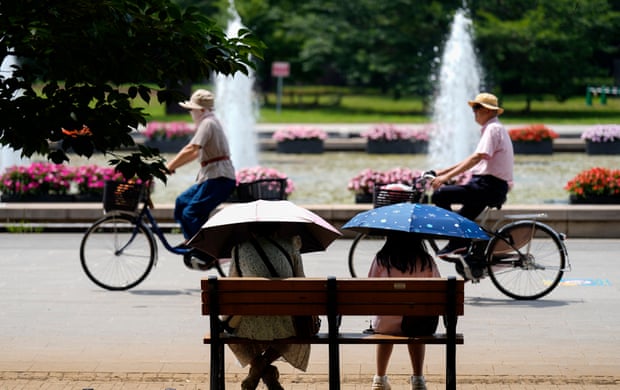TOKYO — In response to a deadly heatwave, the Japanese Association for Acute Medicine has announced the addition of a “most severe” category to its heatstroke index later this year. This decision aims to mitigate deaths from heatstroke, which have significantly increased, with fatalities rising from a few hundred annually two decades ago to around 1,500 in 2022.
 The announcement follows a week where temperatures in parts of Japan soared to 40°C, leading to six deaths in Tokyo alone. This is well above the 35°C threshold for “extremely hot” conditions. The extreme heat has placed immense pressure on medical services, prompting authorities to compare the public health risk to a major natural disaster.
The announcement follows a week where temperatures in parts of Japan soared to 40°C, leading to six deaths in Tokyo alone. This is well above the 35°C threshold for “extremely hot” conditions. The extreme heat has placed immense pressure on medical services, prompting authorities to compare the public health risk to a major natural disaster.
Current Heatstroke Index Levels:
-
Mild: Dizziness and profuse sweating.
-
Moderate: Headaches and vomiting.
-
Severe: Loss of consciousness and convulsions.
-
Most Severe: Core body temperature of 40°C or higher and an inability to communicate.
Impact of the Heatwave:
-
Fatalities: Multiple deaths, including an 86-year-old farmer found surrounded by towels and water bottles.
-
Hospital Admissions: Over 9,000 people sought emergency care for heatstroke in one week, more than double the number during the same period last year.
-
Vulnerable Populations: People over 64 accounted for nearly 60% of emergency hospital visits for heatstroke.
Government and Community Responses:
-
Heatstroke Alerts: Issued across Japan, with the environment ministry designating some areas at “danger” level.
-
Cooling Shelters: Established around Tokyo to offer respite from heat and humidity. Public buildings such as libraries are being used as cooling centers.
-
Water Misting Shelters: Set up in districts like Ginza to help cool residents.
-
Public Messaging: Authorities urge residents to stay hydrated, avoid unnecessary outdoor activities, and use air conditioning to manage heat exposure.
Personal Experiences:
-
Hisako Ichiuji, 60: Took shelter near Tokyo Tower, describing the heat as a “life-threatening emergency.”
-
Sumiko Yamamoto, 75: Noted the drastic increase in heat, relying heavily on air conditioning and staying hydrated to avoid collapse.
The heatwave in Japan is attributed to global heating and a strong high-pressure system in the South Pacific, exacerbating the conditions. As temperatures rise, so do the challenges faced by the elderly and the overall healthcare system. Authorities continue to emphasize the importance of public awareness and precautions to mitigate the impacts of this extreme weather.